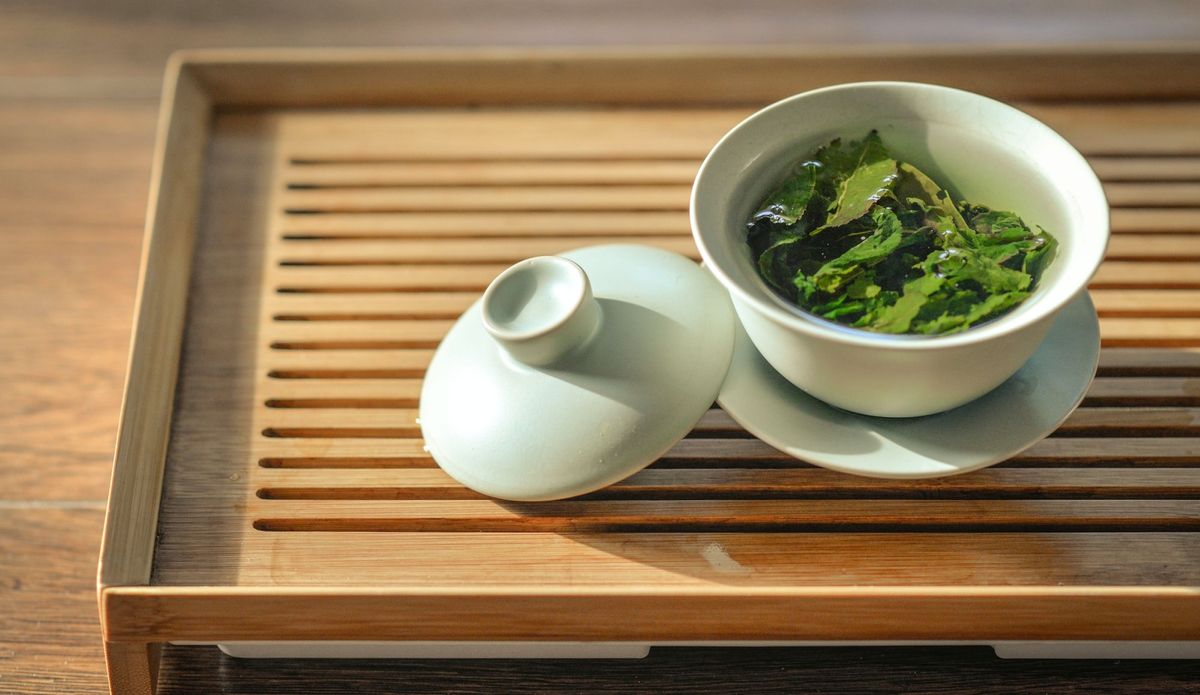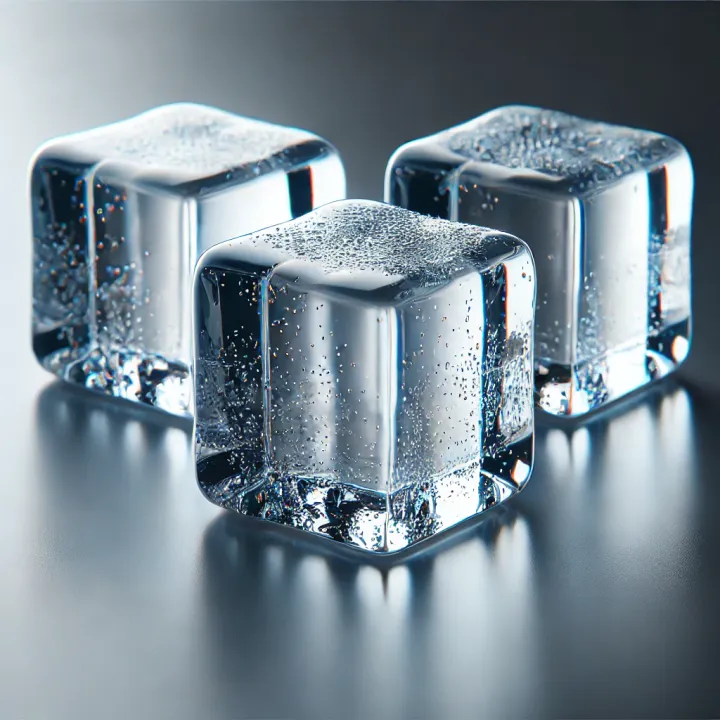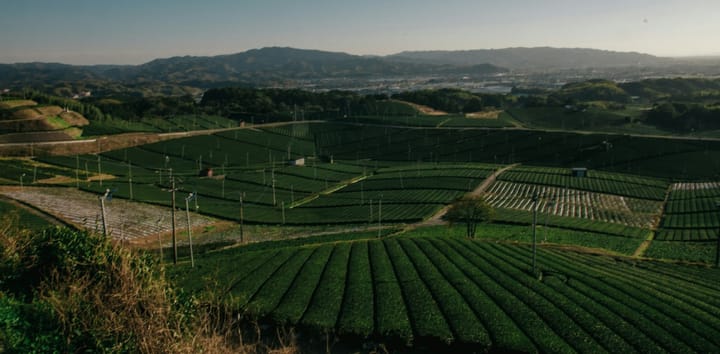Gyokuro: World's Most Expensive Green Tea
Gyokuro, revered for its unmatched umami and unique nori-like aroma, sits atop the Japanese leaf tea hierarchy, its lofty price mirroring the meticulous cultivation, leaf selection, and processing it undergoes. Explore this guide to unravel Gyokuro's allure!

Gyokuro commands the highest price among Japanese leaf teas, a reflection of its meticulous cultivation, leaf selection, and processing.
Its unparalleled umami richness and unique nori-esque aroma crown it as a jewel in the Japanese loose leaf green tea realm. Dive into this detailed guide to explore the allure of Gyokuro!
What Is Gyokuro?
Gyokuro, translated as "jade dew" in Japanese, is a distinct shaded green tea from Japan, contrasting with the typical sun-grown sencha.
Often crafted from specialized cultivars like Asahi, Okumidori, Yamakai, or Saemidori, unlike the commonly used Yabukita for sencha, Gyokuro is celebrated for its sweet, smooth, and umami-rich flavor, thanks to its unique shading process.
About 20 days prior to harvest, the tea bushes are covered, enhancing the chlorophyll for a richer green hue in the leaves and amplifying L-theanine, an amino acid, which lends to its sweet taste.
This meticulous cultivation process sets Gyokuro apart, embodying a luxurious tea experience.
History and Origin
Gyokuro, a highly esteemed type of Japanese green tea, has its roots traced back to 1835.
It was during this period that Yamamoto Kahei of the Yamamotoyama tea company, inspired by tea farmers in Uji who shaded their tea plants with straw umbrellas to shield them from frost, pioneered the cultivation of Gyokuro.
The technique was later honed by Eguchi Shigejuro and saw further refinement during the Meiji era.
The distinctive shading method, which commenced in the Uji region during the early 19th century, led to the creation of Gyokuro, characterized by its glossy dark green needle-shaped leaves.
Today, the prime regions producing Gyokuro include Yame, Uji, and Asahina in Japan, with its cultivation primarily confined to specific tea plantations, making it a rare and exquisite tea.
What's the Price Tag on Gyokuro?
The premium grade Gyokuro, priced at $650 per kilogram, reflects its luxurious standing in the realm of teas.
Why Is Gyokuro So Expensive?

Intensive Effort For Shading Process
The meticulous shading process significantly contributes to Gyokuro's costliness.
Unlike some Sencha shaded for 7 days, Gyokuro, akin to Matcha, is shaded for 21 days or more, reducing bitterness and enhancing sweetness by limiting catechin production, which otherwise occurs in sunlight, and preserving theanine, the sweet and savory flavor agent.
Erecting scaffolding to hold shading nets requires extra labor, making Gyokuro a labor-intensive endeavor.
This, along with the special infrastructure to permit leaf harvesting under the shade, increases the production costs, justifying Gyokuro's premium price.
Three Weeks in Shade: Gyokuro's Trial
The journey of Gyokuro's price begins with the elaborate shading setup, a preamble to the plant's challenging three-week sunlight fast.
This phase, crucial for the plant's health, is met with natural fortification by organic farmers, who favor compost and local nutrients over chemical fertilizers.
This organic touch not only intensifies the labor but also creates a distinct, less dense cellular structure in the leaves, discernible when held against light.
Each of these steps, mirroring a meticulous dedication to natural cultivation, incrementally elevates Gyokuro's price, linking it intrinsically to labor intensity and organic nurturing.
Pristine Picks: Gyokuro's Leaf Legacy
Post the shading saga, Gyokuro's next price determinant is leaf selection. Unlike cheaper teas utilizing older leaves, Gyokuro's essence lies in the top, young, nutrient-rich sprouts, dictating a precise harvest.
This discerning pick not only reduces the yield per acre compared to lesser teas like Bancha, elevating Gyokuro's price, but also demands additional meticulousness during harvest and sorting, further contributing to its premium stature.
Steaming, Drying, and Rolling
Upon harvest, Gyokuro leaves undergo steaming, partial drying, and a precise rolling into tight needle shapes using specialized machines.
This meticulous rolling, unique to Gyokuro, encapsulates the flavor for a robust infusion upon brewing.
Post rolling, a final drying brings the moisture content to 4-7%, ensuring flavor preservation until infusion.
Each of these nuanced steps, especially the specialized rolling, adds to Gyokuro's production costs, playing a part in its premium pricing while enhancing the tea's cherished flavor experience.
Demand Meets Rarity: Gyokuro's Market Allure
Gyokuro's hefty price tag finds justification not just in its production, but in the marketplace. Its rare, concentrated sweet umami flavor has tea enthusiasts and producers striving for perfection, even engaging in competitive tastings.
Once the unique flavors are honed, aficionados willingly pay a premium, viewing Gyokuro as a special-occasion tea rather than a daily brew.
The tradition of savoring Gyokuro in small, potent brews extends its value beyond cost, making the higher price a worthwhile indulgence for a distinct tea experience shared in celebratory moments.
Gyokuro's Health Bounty: A Tea Like No Other
Touted possibly as the healthiest among infused teas, Gyokuro offers a nutrient-dense sip. Its shading process amplifies Theanine and Catechin content, outclassing other Japanese teas by threefold or more.
The higher Theanine aids in blood pressure moderation, relaxation, and neural protection, while the uptick in caffeine sharpens focus.
A Gyokuro cup about 30 minutes before a task can energize your studies, work, or athletic performance, blending health and vitality in a flavorful brew.
Flavor Profile
Gyokuro is lauded for its rich, sweet, and smooth flavor with a creamy texture, accompanied by a profound umami taste.
The meticulous shading process culminates in a high concentration of amino acids, especially L-theanine, which imparts a sweet, savory character to the tea, setting it apart from other green teas.
The lush shade also aids in developing a bright green infusion, a hallmark of Gyokuro tea.
Interesting Facts
- Gyokuro represents a mere 1% of Japan's tea production, underscoring its exclusivity.
- Repurpose steeped Gyokuro leaves into a flavorful appetizer by draining the liquid, then tossing them with Japanese soy sauce and bonito flakes. A splash of lemon juice adds a zesty touch. This way, you savor both the tea and leaves, embracing a zero-waste approach.
- The distinctive cultivation of Gyokuro was an incidental discovery by Yamamoto Kahei when he observed farmers using netting to protect tea plants from frost during his travels in the 1830s.
- The name Gyokuro, translating to "Jade Dew" or "Pearl Dew", is a nod to the light green liquor it produces, a rare attribute among green teas.
Final Thoughts
Gyokuro's pricing is a testament to the meticulous craft and selection ingrained in its production.
The elevated cost, reflecting its rich flavor and labor-intensive creation, stands reasonable when juxtaposed with luxury beverages like champagne.
Even at its pinnacle, a Gyokuro cup's price remains a modest indulgence for a celebratory gathering. So, here's to cherishing the exquisite essence of Gyokuro, a price well justified!


